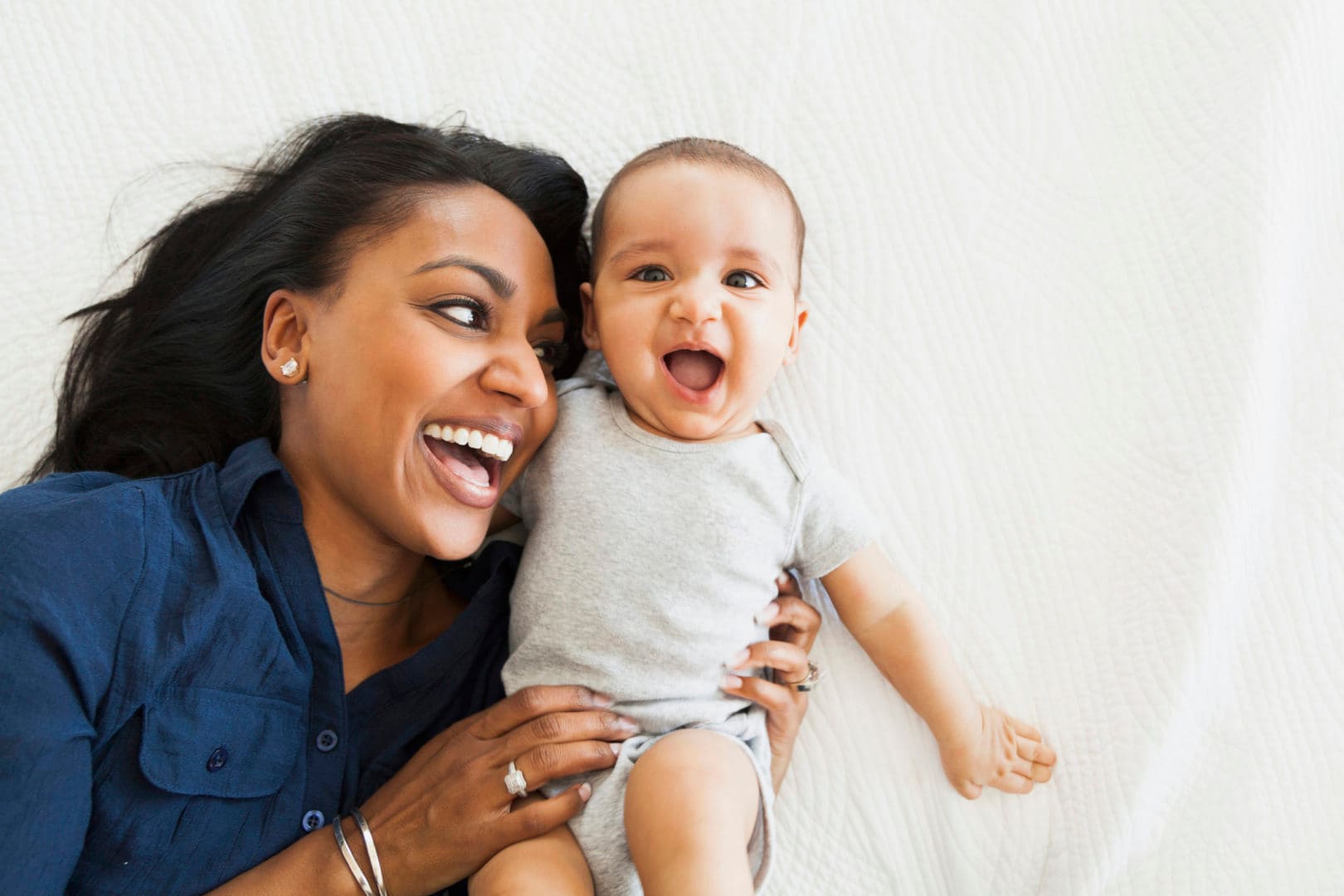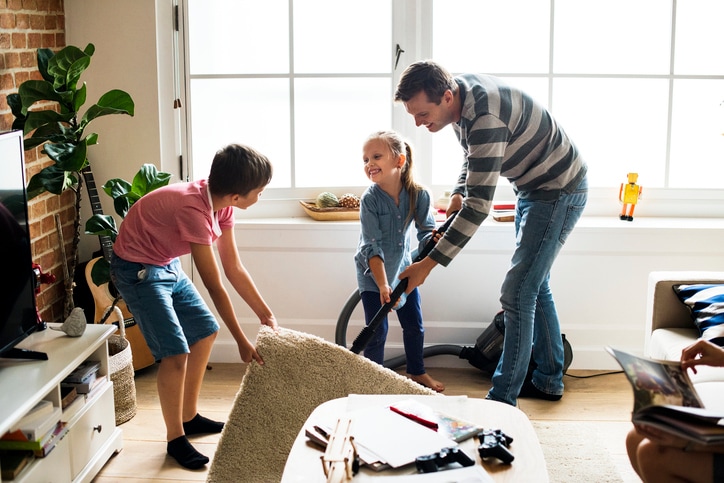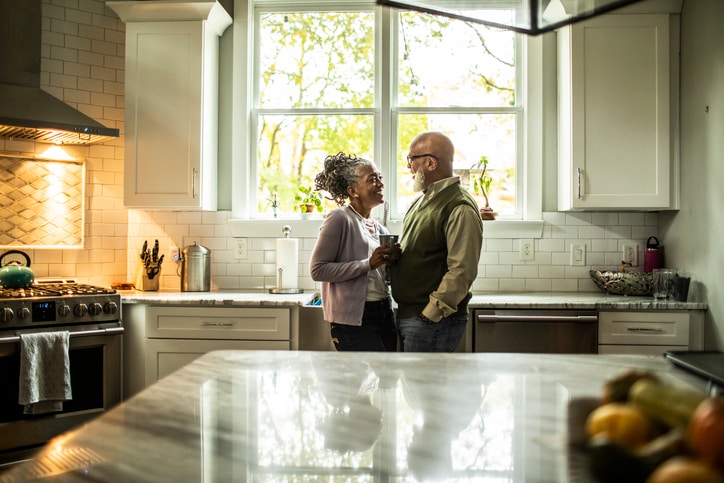Ask any veteran parent and they’ll tell you: A 3-month-old baby is much different than a newborn. While 12-week-old babies are still cuddly infants who are happy to take a snooze in your arms, now is the time many start showing off their impressive 3-month milestones. According to the American Academy of Pediatrics, the 3-month mark is when your little one will start progressing past their jerky newborn reflexes onto more controlled, responsive movements. As with everything related to child development, though, keep in mind that some kids’ progress faster than others.
“It’s important to remember that all babies develop at their own rate, with some being quicker than others,” says Dr. Jen Trachtenberg, creator of Pediatrician in Your Pocket.
Trachtenberg notes that while there are typical age ranges for developmental milestones, it doesn’t necessarily mean there’s cause for worry if your friend’s baby is grasping a toy and yours has yet to master such a feat.
“If you ever have concerns about your baby’s development, have your pediatrician examine, evaluate and monitor their progress,” Trachtenberg says.
Wondering if your not-so-new baby is on track with his physical milestones or want to know what to expect in the near future? Here are 3-month-old milestones to keep an eye out for.
Grasps and shakes hand toys
“At 3 months, babies are starting to develop hand-eye coordination,” says Trachtenberg.
So when you hold that sweet rattle out in front of them, they may be able to grab onto it and even give it a little shake.
Holds head and chest up when on stomach
There’s a reason parents are encouraged to give their babies tummy time as soon as they come home from the hospital: It helps strengthen their head, neck and upper body muscles. At 3 months, your little one should be able to show off some of the fruits of their labor.
“By 3 months of age, most children will try to raise themselves off the floor during tummy time,” says Dr. Brandon Smith, a General Academic Pediatrics fellow at Johns Hopkins in Baltimore. “You may see the baby lifting not only her head, but also her shoulders and chest.”
Moves hands to mouth
At around 3 months of age, babies discover their hands — and following this adorable revelation may come a few “tricks.” After babies find their hands, most will then bring their hands to the center of their body and if they can, put them into their mouths, according to Smith.
Opens and closes hands
Another 90-day mark milestone? “The opening and closing of the hand into and out of a fist usually occurs around 3 months,” says Trachtenberg.
This milestone becomes especially useful during playtime with soon-to-be-loved toys.
“Three-month-old babies spend less time with their hands in tight fists, so this is usually when they start getting better at holding toys or other objects,” says Smith.
Pushes down on legs when feet touch firm surfaces
Although your baby is still far off from walking, they should begin to lightly push down on their legs when you hold them up with his feet touching the ground. No need to run out and get them shoes just yet, but doing this will help strengthen his leg muscles, which will help with standing and eventually walking, which is likely to happen around his first birthday.
Reaches at dangling objects with hands
One of the most adorable 3-month milestones to witness? Watching your baby attempt to swap or reach for toys that are hanging above them.
“Babies will often bat at dangling toys you hold or objects on a mobile at the 12-week mark,” says Trachtenberg.
“When my daughter was about 3 months old, I remember going into her room after a nap to find her semi-reaching for her mobile for the first time,” says Nicole Ellis, of Westfield, New Jersey. “I’ll never forget that moment — it was so adorable!”
Stretches legs and kicks when on stomach or back
During the first two months, your baby’s movements are few and far between. But as she gets a little older, she’ll begin to “uncurl” from her womb-like pose and stretch out a bit.
“One of the most precious videos I have of my son is when he was 3 months old and started to kick his little legs when he was lying on his play mat,” says Jaclyn Santos, of Hazlet, New Jersey. “I remember all the movement made him seem like such a different baby from when he was first born!”
Supports upper body with arms while on stomach
Your little one is a ways off from perfecting their downward-facing dog, but by 12 weeks, they may begin to start working on one yoga pose.
“In addition to lifting their head, shoulders and chest at 3 months, some babies start lifting off the floor by pushing with their hands and arms — sort of like a mini-cobra pose!” says Smith.
Neck control
While most babies don’t have continuous sturdy control of their neck until 4 months, most babies begin holding their head upright when they’re in your arms a month prior.
“Babies should have some control of their head when you’re holding them at 3 months, although at times they may still bobble,” says Smith.
Want to help your baby strengthen his neck muscles, so he doesn’t wobble around when he’s in your arms? Tummy time is one of the best ways to help your infant gain neck control.
When to be concerned
According to Smith, pediatricians become concerned when infants aren’t showing at least some aspects of a milestone that they expected to see at their previous well visit.
“Although there are normal ranges and each child moves along at slightly different times, we’re always keeping an eye out for what we call red flags,” says Smith. “If a few months have passed and your child hasn’t yet met a milestone, we’ll look more closely into their development and growth. The earlier we do something about it, the greater progress we can make in catching them up.”
Most babies who aren’t meeting their milestones eventually catch up. However, an estimated 400,000 babies born in the U.S. each year are at risk for some form of neuromuscular condition, according to the American Academy of Pediatrics (AAP). If you’re concerned about your child’s physical development, speak to their pediatrician. Initially, they may just keep an eye on things, but if your baby fails to progress or if a developmental delay is identified, they may refer you to a specialist or an early intervention service, such as pediatric occupational or physical therapy.
Additionally, the AAP has an interactive online tool that helps parents determine if their child has a physical developmental delay.






